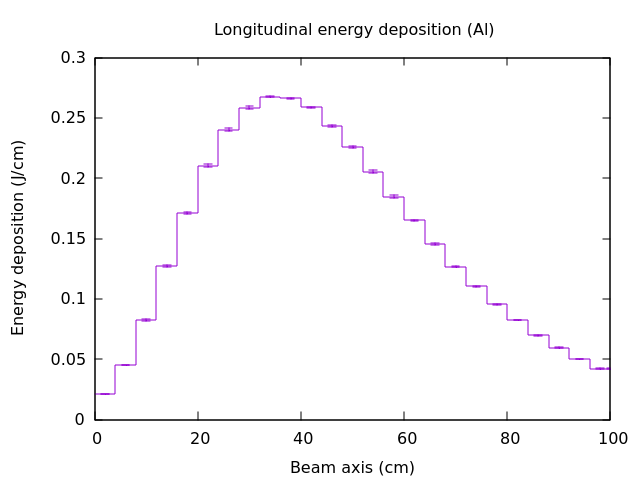Hello Jia,
After checking your simulation, I immediately noticed that you are chosing an annular beam. In this case the sampling is uniform between the minimum and the maximum radii provided. This is indeed not correct and causes an overestimation of the energy deposition peak.
To simulate the correct beam, you must choose a gaussian profile.

For what concerns the second question, the different peak in the longitudinal distribution is just due to the fact that the showers spread inside of the material. So, lot of energy is deposited further away from r=0 and do not contribute to the maximum energy density. That’s why you need to check for the two energy distributions separately (i.e. projecting along different radii).
In other words: when you look for the energy density peak, you should project along very small radii to observe the true peak. On the contrary, when you are checking for the longitudinal energy distribution you should do the opposite, to collect most of the deposited energy.

For what concerns the third question, I see already a dedicated discussion in the forum and I will keep the matters separated.
Here it is my input file. The emf-cuts applied are very rough to speed up the simulation. If you want a precise result, you should modify them accordingly.
ILC_dcalzola.flair (5.4 KB)
Let me know in case of doubts.
Cheers,
Daniele